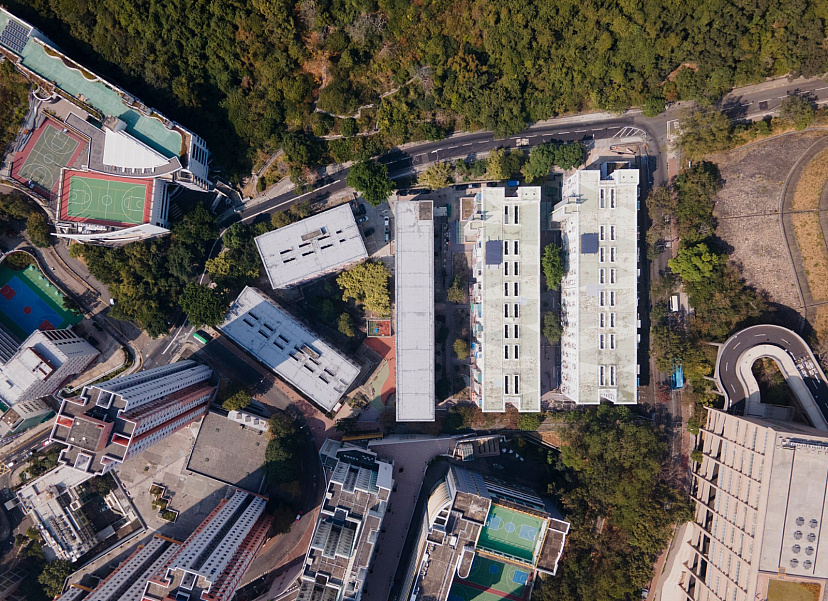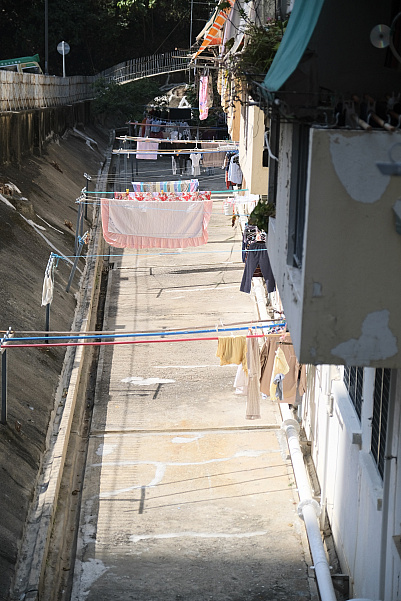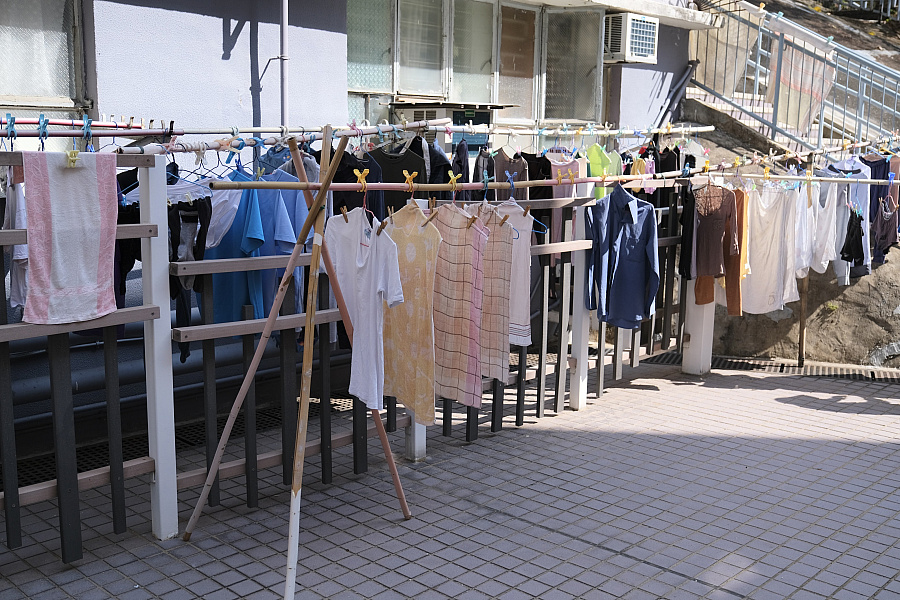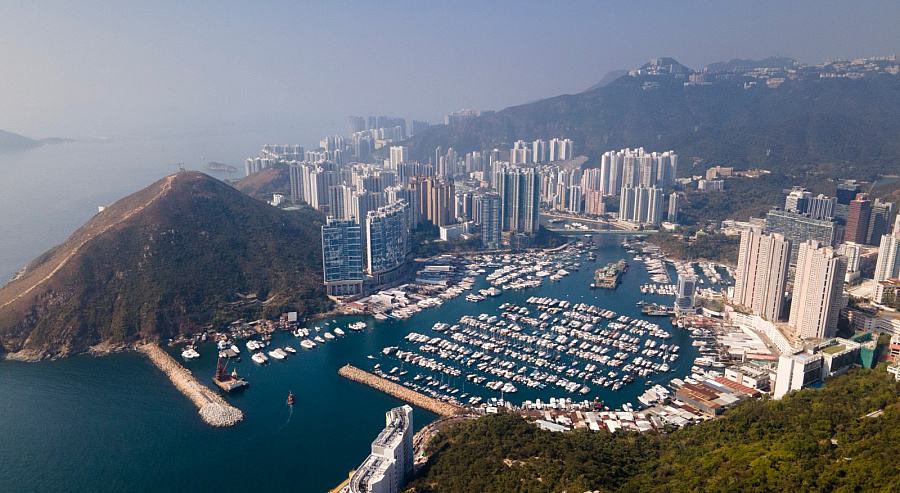I. Fishing Communities in Hong Kong
Hong Kongers who live on land often refer to fishing communities as ‘Tankas’. This appellation has a long history, even as early as the time of Emperor Taizong in Northern Song Dynasty (930-1007 C.E)[1]. The word ‘Tan’ referred to a specific tribe of ‘barbarians’ in ancient dynasties[2], typically with derogatory meaning. Since ‘Tankas’ is considered discriminatory [3] to fishing communities, this article intentionally marks the term with quotation marks, and instead uses the term people-on-the-water when referring to fishing communities.
The worldview of people-on-the-water is very different from that of people living on land. This difference can be seen from their everyday vocabulary. When people on land signal the action of moving forward, the term is ‘go straight’; while people-on-the-water say ‘row forward’ instead. The older generation sees the breaking of glass as a sign of misfortune, therefore they cushion the effect by saying ‘blooming flowers on the ground, bringing prosperity and wealth’ when they drop something accidentally. For fishing communities, on the other hand, they say ‘may we be safe year after year’ instead, since the concept of the ‘ground’ makes little sense to those who live on the water.[4].
Fishing communities rely on boats to make a living. Most of them are fishers, while a minority of the demographic trades goods between coastal cities for a living. Each family lives on their respective boats, which are compartmentalised just like housing on land. Bonded together by living on the same boat, families who live on the water usually share a strong collective spirit. In the old days, people-on-the-water mobilised themselves frequently, and moved their boats around depending on weather, fish migration, and harbours providing replenishment for necessities. They lived wherever their boats resided.
People-on-the-water live different lifestyles depending on their fishing methods. Some fishers work near shores, using lights and traditional fish nets to attract fish in the dark. As a result, they are more connected to land. At the end of each day, they move boats back to the shore. However, the downside of fishing near the shore is that the area for fishing, as well as the variety and quantity of fish, are limited. Fishers who are more adventurous and ambitious tend to fish in deeper waters. In the 1950-60s, electric boats became popular, which improved the power and durability of boats. Offshore fishing is more difficult than inshore fishing, since fishers have to face unpredictable weather as well as the constant threat of pirates.
People-on-the-water has had close connections to the city for a long time. According to the Hong Kong Government Gazette, dated May 15, 1841, there were 16 villages on Hong Kong Island inhabited by 7,450 people, including 2,000 boat dwellers[5]. Many people-on-the-water had stayed in Hong Kong waters for several generations, and their ancestors were buried ashore. They are mostly fishers who were active around the Pearl River Delta and South China Sea, with distinct clothes, customs, and languages. The term ‘Tankas’, which is used to refer to people living on the sea generally, can also be applied specifically to people living on the sea who speak Cantonese. Those who speak Chiuchow or Fujianese are called ‘Hoklo’ [6]. Those who speak Hakka or Shanghainese are called Hakka. However, fishing communities do not care about their place of origin too much. Their sense of identity comes rather from the unique ways of living on the water.
II. Aberdeen as a gathering place of people-on-the-water
People who are accustomed to living on land rely on a land-oriented map, which is why Aberdeen is typically considered inaccessible and remote. From the perspective of people-on-the-water, the area enjoys the protection of two natural barriers, namely Taiping Mountain on Hong Kong Island in the north, and Mount Johnston in Ap Lei Chau in the south. These circumstances make the harbour safe from typhoons. Geographically, Aberdeen is surrounded by the sea on three sides. It also faces the vast fishing territories of the South China Sea. Waters to the south of Po Toi Islands is suitable for Purse-seining (罟網) or Stern Trawling (單拖, meaning one fishing boat towing one fishing net), while the waters further away in Guangdong Province is suitable for Pair Trawling (雙拖, two fishing boats towing one large fishing net). This explains how fishers tend to gather in Aberdeen[7].
During the British colonial era, the fishery industry had developed steadily until the outbreak of the Pacific War and the defeat of Hong Kong, when the Japanese army dealt a heavy blow to the fishery industry. After the war, in October 1945, the Hong Kong government set up a wholesale fish market and Fish Marketing Organisation (FMO) in Aberdeen to revive and centralise the fishery industry. FMO made profit from selling fish, and all the income was either used as low-interest loans for fishers to improve their fishing equipment, or reinvested in relevant fishing infrastructures. Located across Aberdeen, Ap Lei Chau focused on shipbuilding and other marine maintenance services, which was one of the factors that attracted more fishers to the harbour.
In the early years of the People's Republic of China’s establishment in 1949, fishers were not allowed to enter and leave Chinese waters as freely as before. They had to apply to the government for access, with a daily quota. The income fishers made had to be spent locally and could not be taken away in cash. These are the same factors that drove the water-dwelling population to congregate in Hong Kong's coastal waters.
In the 1960s, Hong Kong's fishing industry was close to its peak, with Aberdeen being the largest port in Hong Kong, followed by Shau Kei Wan, Cheung Chau, Castle Peak and Yau Ma Tei)[8]. According to the government's annual report, there were 10,400 fishing vessels and 86,000 fishers in Hong Kong in 1960 [9]. In the 1960s, fishers in Aberdeen accounted for 90% of the population in the district [10].
III. Changes in the relationship between water-based and land-based societies
In agriculture-based economic systems in traditional societies, most governments tended to emphasise agricultural development. There were no regulations or protection for people-on-the-water. Even worse, communities living on the water were generally discriminated against. One of the reasons people on land and water connect is because of their dependency on each other for daily necessities. People-on-the-water are unable to live a self-sufficient life, therefore had to sell fish and products in coastal cities in exchange for water, rice, and other necessities. In return, people living on land got to enjoy marine food as a result of fishers’ labour.
The said social conditions did not improve at all even in the 1940s. People living on land still regarded people-on-the-water as illiterate and uncultured. Before the Pacific War, people-on-the-water rarely visited urban areas. If they were caught by police downtown, they would be beaten by batons and driven back to their boats [11]. It is worth mentioning that although most were considered ‘illiterate’ according to the 1961 government census, which stated that 63.3% of the men and 90.2% of the women were uneducated[12]), they in fact had a wealth of maritime knowledge and living wisdom, as well as artistic creations to express their feelings. Examples include ‘fishing songs’ and ‘saltwater sighs’ (鹹水嘆), which were passed from generation to generation by word of mouth. This way of circulating knowledge meant that they had better memory than people living on land in general. The oral history gathered by Wang Hui-ling and Luo Jia-hui[13] provides an account of how fishers had depicted life on the water.
There was a shortage of food after the war, and people-on-the-water played the role of producing and supplying food. As a result, their social status improved [14]. Fishers started to identify as stakeholders in society. Some of them organised fishers’ cooperatives as a means to voice opinion and lobby the government for rights. [15].
From the perspective of tourists, fishing communities are not only an important member of Hong Kong society, but also a reason why the city is charming. Aberdeen's fishing harbour is a must-see destination for tourists. The symbol of the sailing ship was even used as the logo of the Hong Kong Tourism Board in 1957. The fishing harbour and fishers’ culture are distinct from the rest of Hong Kong's thriving commercial and industrial downtown area, forming an integral part of the city's diverse urban landscape[16].
IV. Yue Kwong Chuen: A milestone in the integration of fishing communities into city life
As a result of the changing relationship between water dwellers and land dwellers, more people became willing to live on land. Some people-on-the-water preferred a stable place to live in, so that family members who were old, sick, pregnant, or too young could live on land while the fishers travel long distances.
The migration of fishing communities to land was a long and gradual process. Before Yue Kwong Chuen was established, there was no public housing in the Southern District. Only a portion of well-off people-on-the-water could afford to move into tenement buildings, while others lived in transitional houses such as ‘houseboats[17]’ (住家艇), shacks (棚仔), or squatter huts. Whenever there was a typhoon or heavy rainfall in summer, fishers’ property and lives were at risk because there was limited space in typhoon shelters and on-shore shelters.
In June 1960, Typhoon Mary hit Hong Kong and caused a lot of damage to the city’s coastal areas, which drew public attention to the welfare of people-on-the water[18]. In the same year, Hong Kong Housing Society named their first low-cost housing estate as Yue Kwong Chuen, which translates into ‘fishing lights’ in Chinese, making the estate a haven for fishers who moved onto land. The naming of the estate was considered one of the most beautiful among other low-cost housings[19]. There are a total of five buildings, namely Shun Fung Lau, Pak Sha Lau, Hoy Kong Lau, Ching Hoy Lau and Hoy Au Lau. Each of these names were representative of something important to the fishing community. In 1962, when the first phase of the estate was complete, Aberdeen had a population of 16,690 people onshore, 27,479 people on board, and 8,692 people settled down in the Ap Lei Chau neighbourhood [20]. If we exclude residents of Ap Lei Chau, the estate provided at least 1,110 residential units for 7,077 people out of a total population of 44,169 people in Aberdeen. It amounted to around one-sixth of the district’s total population. It was indeed good news for fishing communities.
It is well worth mentioning that the threshold of applying for a flat in Yue Kwong Chuen was quite high. Ng Chan, who belonged to the people-of-the-water community, applied for a place. The housing manager got back to Ng saying that he had to sell his fishing boat in order to apply for low-income public housing. Ng naturally rejected the offer since the boat was an important tool for him to earn a living[21]. It turned out that the only people who moved into the estate were fishers employed by boat owners or those who sold their boats and started working on shore.
In 1966, all flats in both phases of Yue Kwong Chuen were occupied. Towards the end of the same year, hundreds of water-based families in Staunton Creek, which is around the present-day Wong Chuk Hang MTR Station, were given a deadline by the government to relocate to a designated area in Shek Pai Wan. They were asked to build their own squatter huts [22]. These families specifically requested to move into Yue Kwong Chuen, yet they were not eligible. This specific request shows that Yue Kwong Chuen was generally considered by Aberdeen residents as an ideal place to live in.
V. Fading away of water-based society
When people-on-the-water migrated to land, they realised the importance of education for children, therefore started enrolling children in schools. It used to be difficult for people-on-the-water to provide stable and continuous education opportunities for their children, while the generation that moved into Yue Kwong Chuen had the opportunity to educate their children from an early age. In fact, a lot of them attended the kindergarten located in Yue Kwong Chuen.
During 1965 to 1973, Japanese historian Hiroaki Kani conducted a historical research on Hong Kong's water-based society at the Chinese University of Hong Kong. It was when Yue Kwong Chuen was established and families started to move in (1962-1965). The historian once interviewed a family of 59 descendants who moved to live on land. Among these family members, only four of the older ones continued to fish, while the younger generation took part in the industrial and commercial sectors [23]. This aligns with the feature interviews that fishers’ descendants who received education did not choose to become fishers themselves.
One of the main reasons is that life at sea was difficult and dangerous. With the economic transformation and stable development of Hong Kong at the time, the profitability of fishing was low compared to other industries. Except for a small portion of people who loved the sea and enjoyed the fishing industry, others turned to alternative occupations to make a living. While it is wonderful to see people-on-the-water and their children living and working happily on land, it is a pity to see the water-based culture fade away.
VI. Community Traditions of Aberdeen and Yue Kwong Chuen
A lot of people considered Aberdeen and Yue Kwong Chuen inconvenient and inaccessible, yet the district also benefits from remoteness and slower urbanisation, allowing for a relatively more independent and smaller economic circle. The area is full of small local shops, so residents do not need to go downtown for daily necessities. The older and more traditional stores are also able to operate like they used to, and have not been completely replaced by large business groups. This small economic circle has helped people build community while preserving their traditional culture and lifestyle.
Due to the uncertainty of life at sea, people-on-the-water are generally keen on worshipping the gods. According to the HKHS’ records in 1963, some fishers stuck to their beliefs and customs even as they moved to Yue Kwong Chuen[24]. An old lady who was arranged to live on the seventh floor had rituals done around the staircase and her flat.There were offerings for the ancestors and gods at the door. Traditionally, Aberdeen fishers worshipped gods including Tin Hau, Tam Kung, and the lesser known Chu Tai Sin in other areas,[25] to pray for safety.
Among the residents of Yue Kwong Chuen, there are a number of ‘Hoklos’ who speak the Chiuchow dialect. They value Yulan Festival rituals very much. Old newspapers show that residents of Yue Kwong Chuen and Shek Pai Wan Estate have worked together for a large-scale Yulan Festival from the 7th to the 9th day of the 7th month of the lunar calendar. Activities included chanting sutras, inviting Chiu Chow opera troupes and giving out ‘peace rice’ to the poor[26].
The Dragon Boat Festival is another important event of the year for the Aberdeen community. Nowadays, dragon boat races are held in Sai Kung, Shatin and Stanley. In fact, the Aberdeen Dragon Boat Race has a history of over 100 years and is said to be the first place where dragon boat races were held in Hong Kong. Fishers were usually in different parts of the sea, but during the Dragon Boat Festival, everyone would get together in Aberdeen and Ap Lei Chau to celebrate.
Today, the organisers of dragon boat races are still Aberdeen residents, especially the fishing communities. They organise the event on a voluntary basis year after year,to pass on the legacy of the race. ‘The fishing harbour style race course, surrounded by fishers watching the race and enthusiastically cheering for the athletes, and the bamboo scaffolding along the waterfront promenade, preserving the original seating for spectators, has become an annual social event for the older residents to gather[27].
Conclusion
Yue Kwong Chuen is a testimony to the fading away of water-based communities, the changes in the relationship between people-on-the-water and people living on land, and the integration of Aberdeen fishing communities with city life. Although they have left the sea, a lot of them still identify as people-on-the-water and are proud of this cultural identity. We can observe from their enthusiasm in organising traditional celebrations each year, that they will always remain a community that strives to keep their culture alive.
Footnotes
[1] 樂史,太平寰宇記, 卷一百五十七,嶺南道一,新㑹縣 (四庫全書本)
[2] 常璩,華陽國志,卷一,巴志
[3] 王惠玲,羅家輝,記憶景觀--香港仔漁民口述歷史,三聯書店(香港)有限公司,2015, pp.46
[4] 可兒弘明,香港の水上居民-中国社会史の断面-,岩波書店,1970,pp.3-4
[5] 危丁明,仙蹤佛跡:香港民間信仰百年,三聯出版社,2019,pp.115
[6] Ibid. pp.58
[7] 王惠玲,羅家輝,記憶景觀--香港仔漁民口述歷史,三聯書店(香港)有限公司,2015,pp.100
[8] Hiroaki Kani, A General Survey of the Boat People in Hong Kong, Southeast Asia Studies Section, New Asia Research Institute, the Chinese University of Hong Kong, 1967. (Monograph series; no. 5).『香港艇家的研究』(香港中文大学‧東南亞研究専刊之五)
[9] Hong Kong 1960 - Report for the year 1960, Hong Kong : Government Printer, 1960, pp.100
[10] “香港仔- 從漁港至工業區”,香港歷史與社會網站,香港中文大學中國研究計劃
http://hkhiso.itsc.cuhk.edu.hk/history/node/3779
[11] 王惠玲,羅家輝,記憶景觀--香港仔漁民口述歷史,三聯書店(香港)有限公司,2015, pp.69
[12] Ibid. pp.34
[13] 王惠玲,羅家輝,記憶景觀--香港仔漁民口述歷史,三聯書店(香港)有限公司,2015
[14] 可兒弘明,香港の水上居民-中国社会史の断面-,岩波書店,1970,pp.33
[15] 王惠玲,羅家輝,記憶景觀--香港仔漁民口述歷史,三聯書店(香港)有限公司,2015, pp.70
[16] Lam, Fung Ki Selina, Experience the vanishing lives : Fisherina Aberdeen, Chinese University of Hong Kong Graduate School, Division of Architecture, 1999, pp.4
[17] A ‘houseboat’ is a boat built for residential use only. However, not only ‘houseboat’ was used as residential boats. In the past, they did not distinguish between working boats and residential boats and different types of fishing boats could be their homes
[18] Hong Kong Housing Society Annual Report, 1960, pp.22
[19] 香港工商日報, 1962-12-06
[20] Hong Kong Housing Society Annual Report, 1962, pp.14
[21] 王惠玲,羅家輝,記憶景觀--香港仔漁民口述歷史,三聯書店(香港)有限公司,2015,pp.268
[22] 大公報, 1966-11-20
[23] 可兒弘明,香港の水上居民-中国社会史の断面-,岩波書店,1970,pp.169-170
[24] Hong Kong Housing Society Annual Report, 1963, pp.15
[25] 黎志邦,《從前有個香港仔》,香港人,2018
[26] 香港潮人盂蘭勝會小冊子,香港潮屬社團總會,2014, pp.11
[27] 香港仔龍舟競渡大賽委員會Facebook主頁:https://www.facebook.com/aberdeendragonboat






